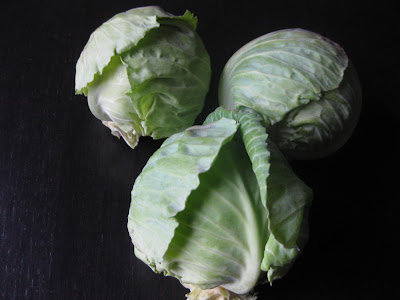This week I thought I'd let you all in on a little secret – the secret of instant vegetable curry. My in-laws all make this curry, and sometimes I do too, when I need to get food on the table quickly and with minimal effort. It's better tasting, healthier, and much cheaper than takeout. The secret? A bag of frozen mixed vegetables. No chopping required! You see, I understand. Sometimes you don't have any fresh vegetables in the house. Or you just don't have time to chop, sad as that is. Or maybe you're just afraid of what you might do if you were to find yourself holding a knife in your hand. No need to tempt fate. Simply stock a couple bags of mixed frozen vegetables in your freezer, and you're good to go in these types of situations.
I should mention that this curry is most definitely an Indian-American concoction, as for the most part frozen vegetables don't exist in India. This is because most people in India don't have refrigerators. Those who do have refrigerators often don't have a freezer, or if they do, the freezer is about the size of a glove compartment. At any rate, with black-outs being a common and regular occurrence across much of the country, I'm not sure you'd want to trust your fridge or freezer for saving much of anything for very long.
You might wonder, how do people live without a fridge? Well, the answer is simple. Dry goods like rice and lentils need no refrigeration. Milk comes every day and is boiled, and used in coffee or tea, or made into yogurt. You go to the market every day or so and get what vegetables you need, and prepare the exact amount to be eaten, so that there are no leftovers. That way, nothing spoils. If you do this enough, you get very, very good at estimating how much food to prepare. Also, if you are Indian, wasting food is something you just do. Not. Do. Period. This cultural imperative is a strong motivator. (America is diametrically opposed to this ethic: Here, wasting is something you just do do.)
I think having a refrigerator may actually contribute to food wasting, because of our tendency to put leftovers in a container which over the course of a week gets shuffled to the back of the fridge and then forgotten about until a month or so later, when we finally get around to throwing out everything that's gone bad. So, kill your refrigerator! They use too much electricity anyway.
I'm assuming you didn't listen to me and you still have your refrigerator/freezer. So you can stockpile a few bags of frozen vegetables and make this curry when you need something fast. I guess that's just how life is in America sometimes.
This recipe follows my formula for Universal Curry, which I wrote about back in April of last year. As I wrote back then, you can sub in any number of vegetables, and get tasty results.
Mixed Vegetable Curry
2 teaspoons brown mustard seeds
1 tablespoon urad dal (black gram)*
1/4 teaspoon asafoetida powder*
1/2 teaspoon turmeric (optional)
2 pounds frozen mixed vegetables
salt
4 tablespoons dried, flaked coconut (unsweetened)
cayenne pepper to taste**
wedges of lemon or lime (optional)
Heat oil on medium high heat, along with mustard seeds and urad dal, in a large skillet or saute pan. When the urad dal is light brown and the mustard seeds begin to sputter and pop and turn grey, lower the heat and add the asafoetida and turmeric (if using). Mix quickly with mustard seeds and urad dal, then quickly add the mixed vegetables and stir to distribute oil and seasoning. Add salt. Cook uncovered on medium heat until the vegetables reach the desired tenderness. Make sure to stir and scrape the bottom of the pan occasionally to avoid sticking. Add the coconut and cook for a couple minutes more. Add more salt to taste if needed. Separate the portion of vegetables you will feed your children, then add desired amount of chili powder to the vegetables remaining in the pan and cook a minute longer. Serve with wedges of lemon or lime. This is optional, but sometimes a little zing of lemon or lime juice helps to brighten the flavors. This dish goes well with dal or sambar, and rice. It also would be nice with chapathis, or pongal, for something simple.
(You can try adding other spices depending on the vegetable. For carrots, I usually add some powdered cumin and coriander as I add the asafoetida. Also consider leaving out the coconut depending on the vegetable. For example, coconut works well with carrots, but I don't like it with eggplant as much.)
* Just get yourself on over to an Indian grocery (or DeKalb Farmer’s Market if near
**If you are cooking for people who don’t mind a bit of spiciness, you may add the cayenne powder at the same time as you add the asafoetida.












